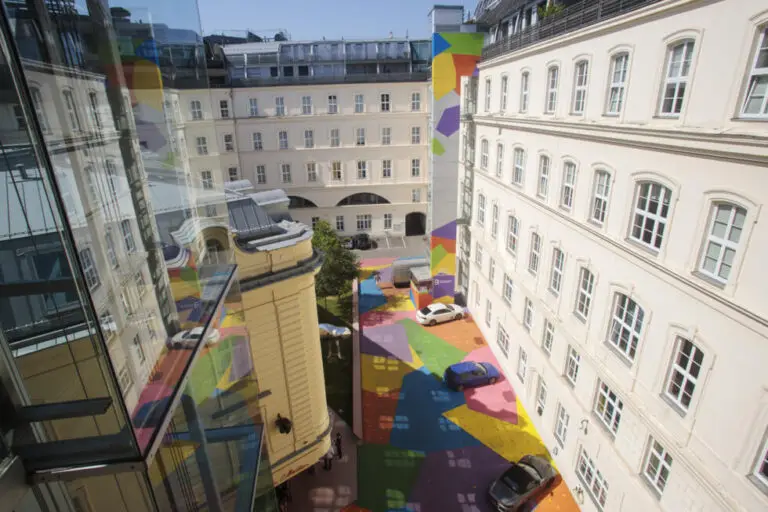As European cities buckle under record-breaking heatwaves, a quiet revolution is rolling out—not in labs, but on the streets. And its weapon of choice? Color.
In the heart of Vienna, a blank slab of asphalt has become the canvas for a radical experiment. The black heat-trapping surface, once searing at 31°C, now rests a full 11 degrees cooler—all thanks to a burst of bright paint.
But this is no street art gimmick. It’s tactical.
Each layer of vivid pigment was applied with purpose, forming a timeline of carbon emissions. Every slab represents a year. Every dot, a billion tons of CO₂. From 1960 to 2000, the courtyard becomes a creeping, visual indictment of industrial excess. What starts with a handful of dots ends in a mosaic of damage.
The creators behind the initiative—a group of young artists, scientists, and urban planners—understand the power of symbolism. Their palette isn’t just cooling the city. It’s confronting its citizens.
Lighter surfaces mean less stored heat. Less stored heat means lower demand on air conditioning. That, in turn, means fewer emissions. The loop—normally destructive—is reversed with a brushstroke.
Yet the real genius is psychological. This isn’t policy or protest. It’s joy. Tourists wander in, drawn by the color. Locals take selfies. And without even knowing it, they begin to internalize the stakes.
“This isn’t about telling people what to do,” says one of the project’s advisors. “It’s about making them feel what’s already happening.”
Europe’s cities, often ancient and asphalt-choked, are among the most vulnerable to heatwaves. Yet with creativity and clear thinking, even their oldest courtyards can be reimagined as tools of survival.
Paint can’t reverse climate change. But it can make people stop walking past it. And that’s a start.






